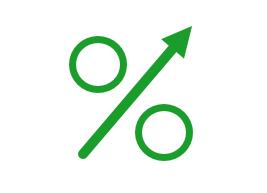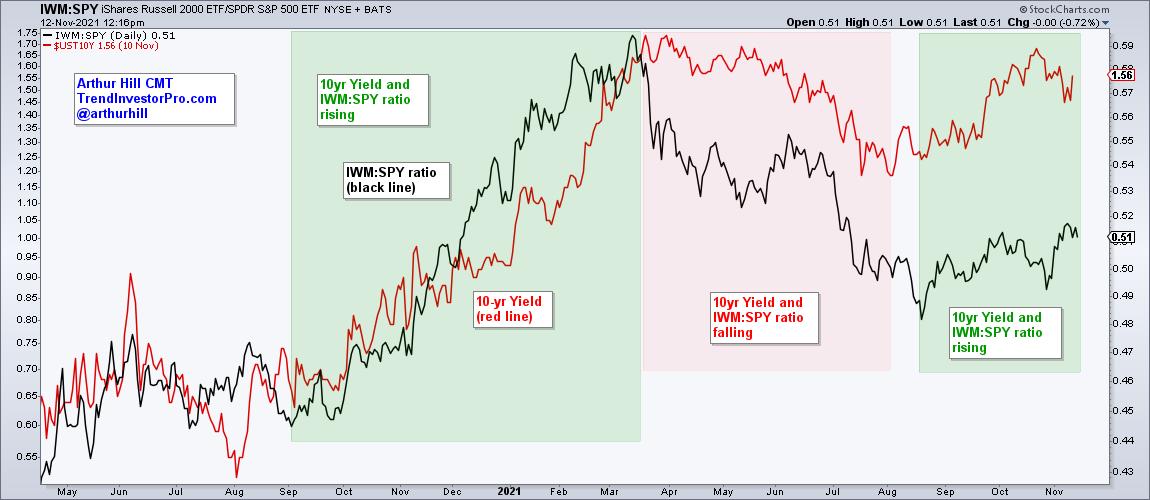 The surge in the 10-yr Treasury Yield is the talk of the town this week, and last week it was the breakout in the Russell 2000 ETF and relative strength in small-caps. Is there a correlation between small-cap relative performance and Treasury yields? Today's commentary will look at the relationship between the 10-yr Treasury Yield and the IWM:SPY ratio because these two have a pretty strong positive correlation.
The surge in the 10-yr Treasury Yield is the talk of the town this week, and last week it was the breakout in the Russell 2000 ETF and relative strength in small-caps. Is there a correlation between small-cap relative performance and Treasury yields? Today's commentary will look at the relationship between the 10-yr Treasury Yield and the IWM:SPY ratio because these two have a pretty strong positive correlation.
Ratio charts measure relative performance, and only relative performance. The ratio rises (relative strength) when the numerator (IWM) increases more than the denominator (SPY). Conversely, the ratio falls (relative weakness) when the denominator increases more than the numerator.
The chart below shows the IWM:SPY ratio (black line) and the 10-yr Treasury Yield (red line). Notice that these two lines move in the same direction, for the most part. Both rose from September to March, which means IWM outperformed SPY when the 10-yr Treasury Yield rose (large green area). The lines fell from April to July, which means IWM underperformed SPY when the 10-yr Treasury Yield fell (red shading). Most recently, the lines have been rising as IWM outperforms and the 10-yr Treasury Yield rises. Who knew lines could be so fascinating!

The current evidence is bullish for small-caps as the Russell 2000 ETF (IWM) broke out of a big range last week and is starting to outperform SPY. The rise in the 10-yr Treasury Yield also creates a bullish tailwind for relative performance. Ratio charts are interesting, but they tell us nothing about absolute performance so keep your eye on the actual price chart for trading decisions.
This week at TrendInvestorPro, I also look at the relationship between the 10-yr Treasury Yield and the Regional Bank ETF (KRE) as well as the Nasdaq 100 Next Gen ETF (QQQJ). Do rising yields influence stocks with high valuations? This week's reports also cover the recent breakouts in copper-related ETFs, long-term breakouts in old economy ETFs and the recent breakout in gold. Get all this and more with immediate access (click here). Also check out our Trend Composite signal table for S&P 500 stocks.
----------------------------------------------
Choose a Strategy, Develop a Plan and Follow a Process
Arthur Hill, CMT
Chief Technical Strategist, TrendInvestorPro.com
Author, Define the Trend and Trade the Trend
Want to stay up to date with Arthur's latest market insights?
– Follow @ArthurHill on Twitter






